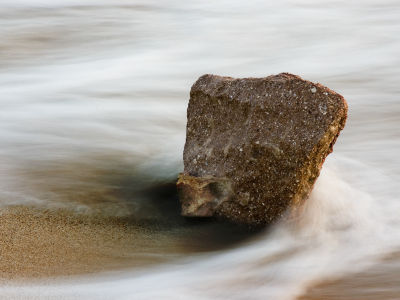An experiment to prove the flat Earth theory ends up proving that the Earth is a sphere

Mr. Geran Campanella, who believes in
Interesting | MCToon
https://mctoon.net/interesting/
In Mr. Campanella's experiment, a camera was installed on one side of a point at sea level, and an assistant with a bright light stood on the other side 3 miles (about 4.8 km) away. Two boards with holes were placed between them, and the height of the camera, light, and hole was 17 feet (about 5.1 m) from the ground.
If the Earth were flat, the light from the light would be reflected on the camera through the plate with holes. However, in Mr. Campanella's experiment, the light of the light was not reflected.

Campanella then used the formula that says 8 inches (about 20 cm) of light falls per square mile , and predicted that 6 feet (about 1.8 m) of light would fall in 3 miles.
Therefore, when we conducted an experiment by raising the height of the light to 23 feet (about 7 m) without changing the position of the camera or the hole in the board, the light from the light was not reflected.

According to the science blog MCToon , Mr. Campanella's prediction that light would fall 6 feet in 3 miles was correct, but it failed because the hole in the board between them was located too low.
In order to actually verify the correct height of the light, it is necessary to follow the path of the light and calculate the lowest point of the light path over the entire 3 miles to the camera.

MCToon creates programs that run on Python and performs calculations. The lowest point is halfway between the camera and the board, 2.25 miles (about 3.6 km) from the light.

Furthermore, using the formula above, the minimum height at which the light falls is 40.5 inches (about 1 m).

At 0.75 miles (about 1.2 km) after the lowest point, the light path will rise 4.5 inches (about 11.4 cm) to the height of the camera, allowing light to reach the camera.

However, in reality, refraction changes depending on the weather. It seems that the higher the refractive index , the lower the predicted height of light.
If the refractive index of the ground at night is +0.167, the drop of light including refraction is 6.67 inches (about 17 cm) per square mile, and the lowest height at which light falls is 33.76 inches (about 86 cm). . The rise width from the lowest height to the camera is 3.75 inches (about 10 cm), and the distance from the light to the camera, including refraction, is calculated to be 2.5 feet (about 76 cm).
Therefore, in order to reflect the light on the camera at a height of 17 feet, it is necessary to install the light at a height of 19.5 feet (about 5.9 m) from the ground.

Under the flat Earth theory, the light would never reach the camera in this experiment, and as a result, it proved the spherical Earth theory. However, Mr. Campanella says that the light did not reach the camera due to the influence of weeds, and is considering repeating the experiment at a higher altitude to prove the flat Earth theory.
Related Posts:
in Science, , Posted by log1r_ut







